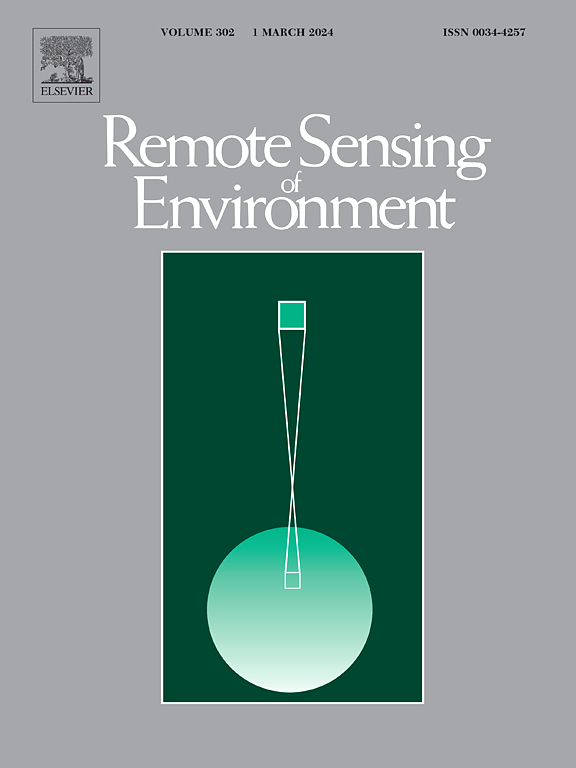A transformer-based model for detecting land surface phenology from the irregular harmonized Landsat and Sentinel-2 time series across the United States
IF 11.1
1区 地球科学
Q1 ENVIRONMENTAL SCIENCES
引用次数: 0
Abstract
Land surface phenology (LSP) has been widely generated using traditional methods of fitting satellite-based time series of vegetation indices over the past two decades. However, these methods are highly vulnerable to the presence of temporal gaps and the use of specific smoothing or gap-filling algorithms. Several attempts have recently used Convolutional Neural Networks (CNNs) and Recurrent Neural Networks (RNNs) to detect phenology, which produce an uncertainty of larger than three weeks and as large as two months. Further, these deep learning methods cannot handle missing data in time series and still need temporal gap-filling, which results in low to moderate accuracy in phenology detection. This study proposed a novel Transformer-based model to detect 30 m phenological events across the United States for the years 2019 and 2020. Specifically, we adapted the Transformer architecture to handle irregular time series and capture long-range relationships among all high-quality observations in the satellite time series. The Transformer-based model was trained using reference time series samples extracted from the high-quality LSP product, which was recently produced by fusing the HLS (Harmonized Landsat and Sentinel-2) observations with near-surface PhenoCam time series (HLS-PhenoCam LSP). The accuracy of the Transformer-based model for LSP detection using the two-band Enhanced Vegetation Index (EVI2) was investigated and compared with the most widely used Hybrid Piecewise Logistic Model based Land Surface Phenology Detection (HPLM-LSPD) algorithm and one dimensional (1D) CNN model. The phenological patterns detected from the Transformer-based model and the HPLM-LSPD algorithm were mostly comparable, despite the occasional differences in magnitude and local details when compared to the reference HLS-PhenoCam LSP product. The accuracy metrics indicated that the Transformer-based model produced overall higher accuracy than the HPLM-LSPD algorithm and the 1D-CNN model, with a correlation coefficient (R) of 0.74–0.88, a mean absolute difference (MAD) of 9.6–15 days, a root mean squared error (RMSE) of 13.5–20.6 days, and a mean systematic bias (MSB) of 0.7–4.7 days. The statistical analyses also showed that the Transformer-based model outperformed the HPLM-LSPD algorithm across all vegetation types and the HLS time series with different numbers of high-quality observations. Further, the accuracy of the Transformer-based model is contingent upon the proportion of high-quality observations. The model could achieve consistently high accuracy if the high-quality observations exceed 25 %. This study paved an effective way from traditional methodologies to machine learning methods for detecting phenological transition dates of vegetation development across various ecosystems.
求助全文
约1分钟内获得全文
求助全文
来源期刊

Remote Sensing of Environment
环境科学-成像科学与照相技术
CiteScore
25.10
自引率
8.90%
发文量
455
审稿时长
53 days
期刊介绍:
Remote Sensing of Environment (RSE) serves the Earth observation community by disseminating results on the theory, science, applications, and technology that contribute to advancing the field of remote sensing. With a thoroughly interdisciplinary approach, RSE encompasses terrestrial, oceanic, and atmospheric sensing.
The journal emphasizes biophysical and quantitative approaches to remote sensing at local to global scales, covering a diverse range of applications and techniques.
RSE serves as a vital platform for the exchange of knowledge and advancements in the dynamic field of remote sensing.
 求助内容:
求助内容: 应助结果提醒方式:
应助结果提醒方式:


